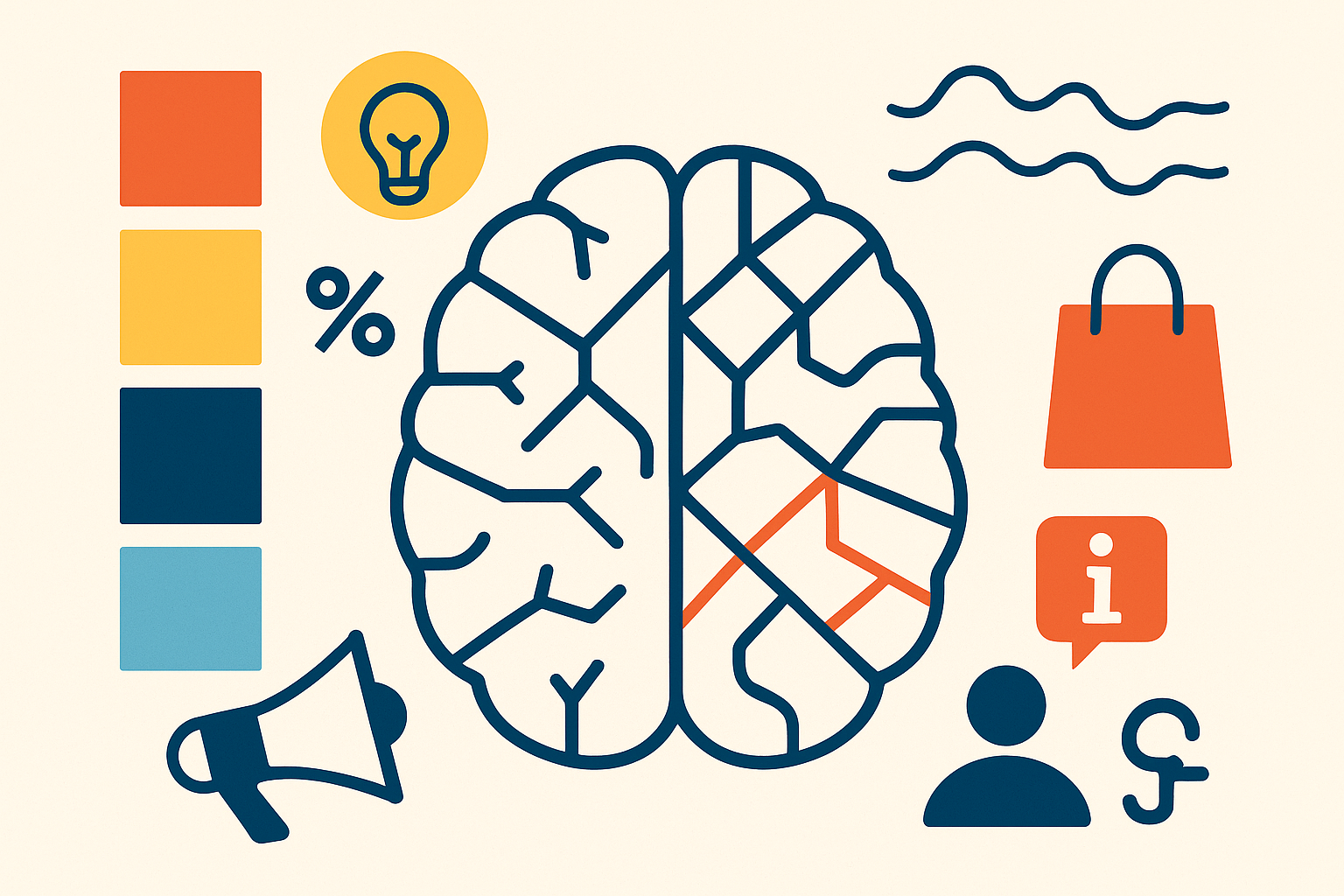In an era where attention is the most valuable commodity, brands compete not only on product performance but on mental availability, how easily they come to mind in buying situations. This is where brand assets play a profoundly strategic role.
Brand assets, colours, logos, taglines, characters, shapes, sounds, people, experiences and other recognisable brand cues, are far more than surface-level aesthetics. They represent psychological shortcuts that help consumers navigate complexity and overload. At their core, brand assets reduce cognitive effort, trigger emotional memory, and act as distinctive signals that encourage trust and preference.
Yet many organisations misunderstand what makes something an asset. A visual or verbal cue only becomes an asset when it is both unique to the brand and widely recognised by shoppers and consumers. A colourful gradient, a charismatic spokesperson, a sonic sting or even a packaging silhouette is only powerful if consumers mentally link it to the brand and no other.
Why Brand Assets Matter More Than Ever
The average consumer encounters anywhere from 6,000 to 10,000 commercial messages daily. Cognitive science shows that to cope with overload, the human brain uses shortcuts known as heuristics, rapid decision-making mechanisms that conserve mental energy. Brands that activate these heuristics win; those that don’t are forgotten, no matter how superior the product.
Neurological research on memory reconsolidation demonstrates that elements like colour, shape, sound and narrative help encode memories through multi-sensory processing pathways, allowing fast retrieval later. This is why Tiffany Blue, Coca-Cola red, the McDonald’s Golden Arches, and the intel bong sound effect instantly trigger brand recognition, trust and feelings long before a rational evaluation occurs.
In other words: brand assets aren’t decoration, they’re neuro-commercial levers.
Distinctive vs. Meaningful Brand Assets
Much marketing discussion conflates meaningfulness with distinctiveness. While associations such as value, reliability or luxury matter to brand positioning, they do not help the brand be noticed. Distinctive assets provide mental availability, making the brand identifiable even with no logo present.
Marketing effectiveness increases when brand assets are used consistently and repeatedly for years, not changed every design cycle. Distinctive assets help brands be:
- Recognisable: quickly identified in clutter
- Memorable: easily retrieved in buying contexts
- Attributable: unmistakably linked to the correct brand
- Trust-building: trigger familiarity and psychological safety
Because consumers operate primarily on System 1 thinking, fast, automatic, emotional processing (Kahneman, Thinking, Fast and Slow), brands that provide quick recognition gain disproportionate advantage.
How Brand Assets Become Assets: The Psychological Mechanisms
Brand elements become assets through reinforcement mechanisms found in behavioural science:

a sound, colour or symbol instantly triggers recognition, it has become a mental shortcut embedded in memory.
The Commercial Power of Strong Brand Assets
Brands with strong distinctive assets enjoy measurable advantages:
1. Increased Marketing Efficiency
Ads become effective faster because consumers recognise the brand earlier in exposure. This reduces costly repetition.
2. Price Premiums
Familiarity increases perceived value and reduces uncertainty, allowing brands to command higher pricing.
3. Faster Innovation Adoption
New products leveraging strong assets borrow recognition and trust from the master brand.
4. Differentiation Beyond Rational Claims
Features can be copied easily; distinctive assets cannot.
5. Defensive Strength
Clear asset ownership makes imitation socially and legally risky.
In short: distinctive brand assets create competitive moats.
Common Mistakes Brands Make
Many organisations dilute or damage their assets by:
- Redesigning too frequently, disrupting recognition.
- Using weakly distinctive design systems lacking ownership.
- Confusing trends with strategy, adopting generic industry aesthetics.
- Failing to measure asset attribution using empirical research, not opinion.
- Underusing assets instead of reinforcing them consistently across channels.
The strongest global brands treat distinctive assets not as creative choices but as strategic investments.

Why Measuring Brand Assets Is Essential
Companies frequently assume consumers associate an element with their brand when, in reality, testing often reveals it is generic or misattributed. Research from the Ehrenberg-Bass Institute shows that most brand assets are far weaker than marketers believe, often mis-claimed by competitors or attributed to no brand at all.
Proper measurement asks three key questions:
- Do consumers recognise the asset?
- Do they correctly link it to the brand?
- Is the association uniquely owned?
If all three are not strong, the element is not yet an asset, merely a design feature.
Tools such as implicit recognition testing, reaction-time measurement, and forced-choice attribution testing are critical to evidence-based decision-making.
Conclusion
Brand assets are not aesthetic choices; they are psychological and commercial power tools. In a world of infinite choice, people buy what they recognise, trust and recall, without needing to think.
The brands that win are those that understand:
- Consistency beats novelty
- Distinctiveness beats meaning alone
- Psychology beats subjective design preference
Investing in brand asset strategy is not optional; it is a competitive necessity.





